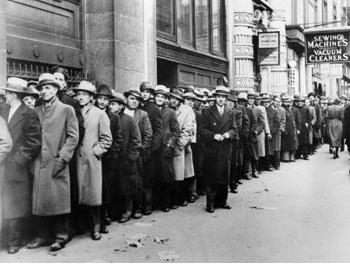 Both Democrats and Republicans last night said that “10% of Americans are unemployed.”
Both Democrats and Republicans last night said that “10% of Americans are unemployed.”
That is incorrect. The United States Census Bureau says that 15 million Americans are unemployed. It also says that America’s population aged 16+ is 237 million. The population including children (they’re Americans too!) is 309 million.
15 million is 6 percent of 237 million and 5 percent of 309 million: the percentage of Americans 16+ who are unemployed is 6% and the percentage of all Americans who are unemployed is 5%.
Confusion arises because the “10% unemployment rate” commonly reported refers to the fraction of the LABOR FORCE that is unemployed. Millions of Americans are not in the labor force: many of them are willing stay-at-home-moms or stay-at-home-dads or gladly retired or children busy with school.
Of course, when there’s “confusion”, there are politicians who cite the incorrect statistic that miraculously happens to be biased in their favor (in this case, “in their favor” is to appear sympathetic).
In summary, unemployment (by the Census Bureau’s definition) is currently 10% of the labor force, 6% of American adults and 5% of Americans.
- Bulenox: Get 45% to 91% OFF ... Use Discount Code: UNO
- Risk Our Money Not Yours | Get 50% to 90% OFF ... Use Discount Code: MMBVBKSM
Disclaimer: This page contains affiliate links. If you choose to make a purchase after clicking a link, we may receive a commission at no additional cost to you. Thank you for your support!



What have you smoked lately?
Best example I’ve seen of why not to publish articles while otherwise distracted. This certainly gives one pause to contemplate his ‘new math’. The author only had to look at two numbers. Americans collecting current unemployment benefits and Americans collecting extended benefits.
You ADD the dang numbers.. or at the very least quote shadowstats.com.
Doesn’t an EDITOR live here?
Really….